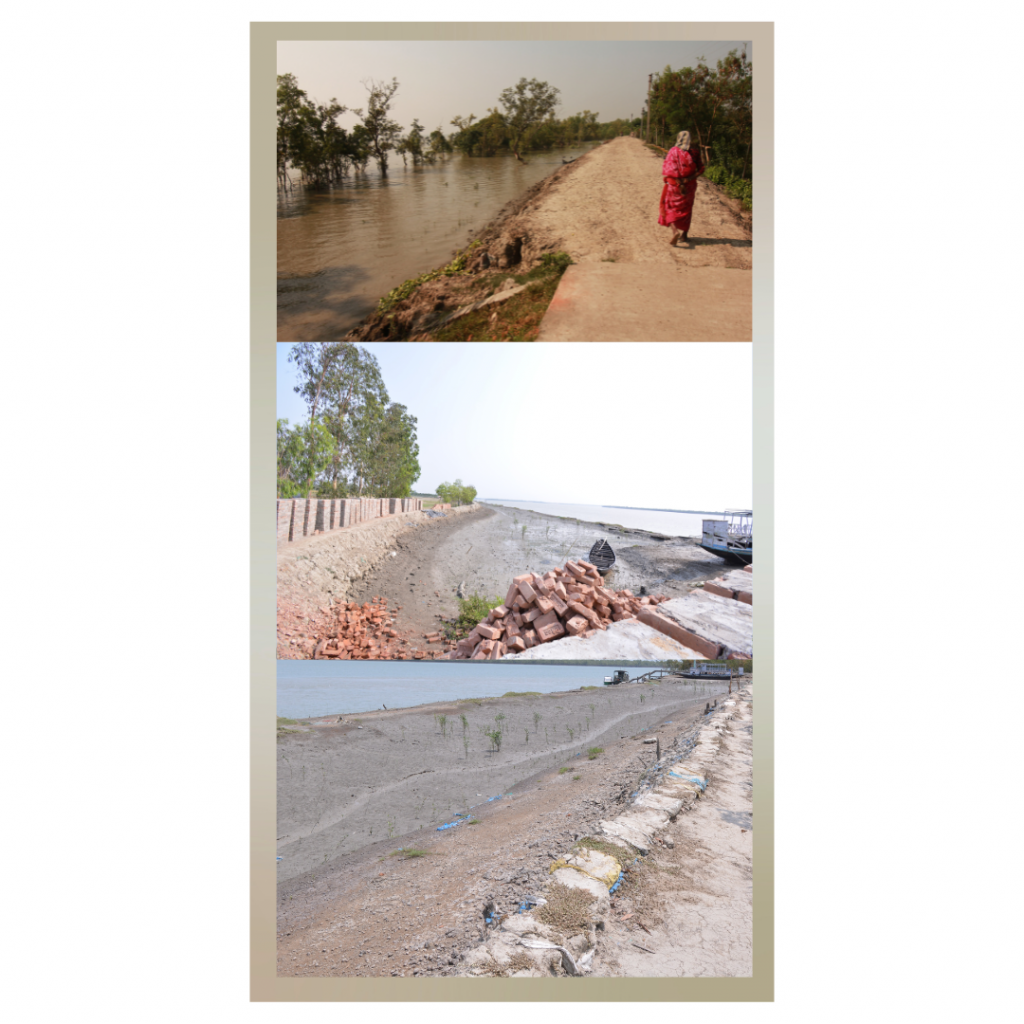We observed World Environment Day on 5th June with a collaborative post by Sritama and Arijit (Sritama did the secondary literature research and wrote the text, Arijit contributed the photographs and was part of the primary research with Barnamala who also adapted and designed the writing and photos for social media). In the process, we drew upon the community archives that are forming as Delta Lives develops. We also realised gaps in our ecosystems’ knowledge and figured out ways forward with our participatory and co-creative activities with the islanders.
The concern around which we shaped our social media post for the day:
“Every year, when the Sundarbans face devastating cyclones or storms, we gather on the embankment, stay awake all night and try our best to protect the embankment from breaking down because it would mean doom for us.” – Hari Mistri, who has lived in the islands since childhood
Our aim through the social media post was to find allies for Hari, and others like her who live with the risk of the embankments crumbling year after year, by finding voices that echo her or investigate the roots of her concern. The embankments are, after all, a symbol of collective resistance that local people put up.
The embankment called badh in local (Bengali) language has been such a strong presence in the life of the inhabitants in the Sundarbans that it has also made its way into literature. In the novel Hungry Tide, Amitav Ghosh writes:
“On being asked by Nirmal (intellectual, teacher and writer) what Fokir (local impoverished fisherman) can observe, he responds, “badh”. This response pleases Nirmal because he writes in his diary, “For the badh is not just the guarantor of human life on our island; it is also our abacus and archive, our library of stories.”
The badh is a living evidence of what has happened in the island of Lusibari (the fictionalised island in Hungry Tide). It is a locus of struggle, conflict and fortitude and, as Nirmal points out, a “library of stories” that will not usually get written in a climate justice anthology. The embankment or badh offers a much-grounded way of understanding the place. A crack or a sign of repair in the badh, is an indication of why a repair was needed in the first place and what caused these multiple breaks. Nirmal narrates three stories to Fokir about the cracks in the badh and each story is a reflection of the intermingling of politics and survival in the Indian Ocean world.
Scholars like Meghna Mehtta who has conducted extensive ethnographic research in the Sundarbans points out the inadequacies of the embankments as infrastructure. She writes:
“The design imagination of the British, based on European riparian systems, failed to adapt to the assertive rivers, monsoon and cyclonic winds of the Bay of Bengal delta.”
Perhaps that is one the reasons the embankments get constructed, repaired and yet they fail. So, whom do we hold accountable for the ongoing climate violence in the Sundarbans?
There are no easy answers to these questions. With the islanders, scholars, novelists, anthropologists, we continue to pose and throw these questions while also not living with the complacency of mere questioning. With the tools we have, we are hoping to recreate the memory of community resilience during climate disasters, with the visual of the badh at the core. Be with us, as we manifest this visual through a co-creative process – making the memory of resilience a site of imagination and play, and ensuring that resilience coincides with resistance, such that we hold people accountable but also encourage healing by diving deep into our reserves of indigenous, local environmental wisdom. We’ll put out snippets of this co-creation on our social media channels soon!
REFERENCES
Ghosh, Amitav. Hungry Tide. HarperCollins, 2005.
Mehtta, Meghna. “Unembanking Habitations and Imaginations: The Politics of Life Amidst the Ebbs and Flows of the Sundarbans Forests of West Bengal.” Monsoon [+ other] Waters, edited by Lindsay Bremner, University of Westminster, London, 2019, 29-43.

